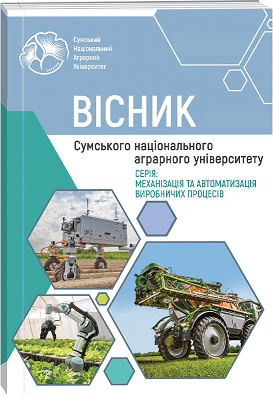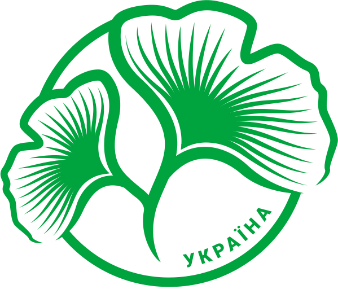RESEARCH OF THE TORQUE-FLOW PUMP OPERATING PROCESS WITH A NON-CYCLIC IMPELLER IN THE OPERATING RANGE
Abstract
Torque-flow (TFP) pumps are widely used in various industries for pumping contaminated, fibrous or gas-containing liquids due to their simple design, reliability and low risk of clogging, despite the limitations of efficiency and head. The main disadvantages of torque-flow pumps are low energy efficiency (pump efficiency η=0.38-0.58) and the possibility of clogging of their flow part by the pumped product. This problem can be solved by ensuring the self-cleaning effect of the torque-flow pump by designing the impeller with a non-cyclic arrangement of blades, which will ensure a pulsating nature of the pressure in its inter-blade channels. The aim of the study was to establish the characteristics of a pump with noncyclic arranged blades and compare the results obtained with the characteristics of a similar pump with evenly arranged blades. To conduct a numerical research in the ICEM CFD software package, unstructured computational meshes of the stator element (housing) and the rotor element (impeller) were created. The pump operating process was simulated in a stationary setting using the Ansys CFX software package, and the k-ε turbulence model in a stationary setting was used, water at a temperature of 25°C was used as the operating medium. According to the results of the study, it was found that when using an impeller with a non-cyclic arrangement of blades (with no blades), there is an increase in the relative velocity near the operating side of the blade in the expanded inter-blade channel, an uneven distribution of relative velocity at the entrance to the wheel simultaneously with the appearance of a flow separation zone in the inter-blade channels, which leads to increased losses, reduced pressure and, accordingly, pump efficiency. At the same time, the above allows us to state that according to Bernoulli's law, there is some increased pressure in the expanded impeller channels with a non-cyclic arrangement of blades in the reduced speed zones. This increased pressure creates the prerequisites for unstable relative motion of the operating fluid compared to using a standard impeller. In turn, this mechanism can be used as a self-cleaning mechanism for torque-flow pumps.
References
2. Gao, X., Shi, W., Zhang, D., Zhang, Q. & Fang, B. (2014). Optimization design and test of vortex pump based on CFD orthogonal test. Nongye Jixie Xuebao/Transactions of the Chinese Society for Agricultural Machinery, 45 (5), 101–106. http://dx.doi.org/10.6041/j.issn.1000-1298.2014.05.016
3. Quan, H., Chai, Y., Li, R., Guo, J. (2019). Numerical simulation and experiment for study on internal flow pattern of vortex pump. Engineering Computations, 36, 1579–1596. https://doi.org/10.1108/EC-09-2018-0420
4. Antonenko, S., Sapozhnikov, S., Kondus, V., Chernobrova, A., Mandryka, A. (2021). Creation a universal technique of predicting performance curves for small-sized centrifugal stages of well oil pump units. Journal of Physics: Conference series, Vol. 1741 012011. https://doi.org/10.1088/1742-6596/1741/1/012011
5. Gusak, O., Krishtop, I., German, V., Baga, V. (2017). Increase of economy of torque flow pump with high specific speed. IOP Conf. Ser.: Mater. Sci. Eng., 233 012004. https://doi.org/10.1088/1757-899X/233/1/012004
6. Krishtop, I. (2015). Creating the flowing part of the high energy-efficiency torque flow pump. Eastern-European Journal of Enterprise Technologies, 2 (74), 31–37. https://doi.org/10.15587/1729-4061.2015.39934
7. Kotenko, A., Herman, V., Kotenko, A. (2014). Rationalization of Ukrainian industrial enterprises in a context of using torque flow pumps on the basis of valuation of the life cycle of pumping equipment. Nauka i Studia, Vol. 16 (126), pp. 83–91. http://essuir.sumdu.edu.ua/bitstream/123456789/38769/3/kotenko_poland1.PDF
8. Kondus, V., Kalinichenko, P., Gusak, O. (2018). A method of designing of torque-flow pump impeller with curvilinear blade profile. Eastern-European Journal of Enterprise Technologies, 3/8 (93), 29–35. https://doi.org/10.15587/1729-4061.2018.131159
9. Kumar, J., Gopi, S., Amirthagadeswaran, K. (2023). Redesigning and numerical simulation of gating system to reduce cold shut defect in submersible pump part castings. Proceedings of the Institution of Mechanical Engineers, Part E: Journal of Process Mechanical Engineering, Vol. 237 (3), pp. 971-981. https://doi.org/10.1177/09544089221142185
10. Kondus, V.; Kotenko A. (2017). Investigation of the impact of the geometric dimensions of the impeller on the torque flow pump characteristics. Eastern-European Journal of Enterprise Technologies, Vol. 1/4 (88), pp. 25–31. https://doi.org/10.15587/1729-4061.2017.107112
11. Krishtop, I., German, V., Gusak, A., Lugova, S., & Kochevsky, A. (2014). Numerical Approach for Simulation of Fluid Flow in Torque Flow Pumps. In Applied Mechanics and Materials. Trans Tech Publications, Ltd., 630, 43–51. https://doi.org/10.4028/www.scientific.net/amm.630.43
12. Rogovyi, A., Korohodskyi, V., Neskorozhenyi, A., Hrechka, I., Khovanskyi, S., Reduction of Granular Material Losses in a Vortex Chamber Supercharger Drainage Channel. Advances in Design, Simulation and Manufacturing V. DSMIE 2022. Lecture Notes in Mechanical Engineering, pp. 218–226. https://doi.org/10.1007/978-3-031-06044-1_21
13. Dehnavi, E., Solis, M., Danlos, A., Kebdani, M., Bakir, F. (2023). Improving the Performance of an Innovative Centrifugal Pump through the Independent Rotation of an Inducer and Centrifugal Impeller Speeds. Energies, 16(17), 6321. https://doi.org/10.3390/en16176321
14. Jung, D.-W., Seo, C.-W., Lim, Y.-C., ... Lee, S.-Y., Suh, H.-K. (2023). Analysis of Flow Characteristics of a Debris Filter in a Condenser Tube Cleaning System. Energies, 2023, 16(11), 4472. https://doi.org/10.3390/en16114472
15. Dehghan, A., Shojaeefard, M., Roshanaei, M. (2024) Exploring a new criterion to determine the onset of cavitation in centrifugal pumps from energy-saving standpoint; experimental and numerical investigation. Energies, Vol. 293, 130681. Retrieved from http://dx.doi.org/10.1016/j.energy.2024.130681
16. Kondus V., Ciszak O., Zhukov A., Mushtai M., Polkovnychenko V., Krugliak A. (2024). Development of a self-cleaning mechanism for torque-flow pumps. Journal of Engineering Sciences, Vol. 11(2), pp. F17–F26. https://doi.org/10.21272/jes.2024.11(2).f3
17. Dehnavi, E., Bakir, F., Danlos, A., Kebdani, M. (2023). Numerical Analysis of Distance Effect between Inducer and Centrifugal Impeller in Independent Rotational Turbopump in Co-rotating and Counter-rotating Mode. European Conference on Turbomachinery Fluid Dynamics and Thermodynamics, ETC, 2023. http://dx.doi.org/10.29008/ETC2023-203
18. Kondus, V., Puzik, R., German, V., Panchenko, V., Yakhnenko, S. (2021). Improving the efficiency of the operating process of high specific speed torque-flow pumps by upgrading the flowing part design. Journal of Process Mechanical Engineering, Vol. 237, pp. 1741 012023. https://doi.org/10.1088/1742-6596/1741/1/012023
19. Gerlach, A., Thamsen, P. & Lykholt-Ustrup, F. (2016). Experimental Investigation on the Performance of a Vortex Pump using Winglets. ISROMAC 2016. International Symposium on Transport Phenomena and Dynamics of Rotating Machinery. http://isromac-isimet.univ-lille1.fr/upload_dir/finalpaper/181.finalpaper.pdf
20. Dehnavi, E., Danlos, A., Solis, M., Kebdani, M., Bakir, F. (2024). Study on the pump cavitation characteristic through novel independent rotation of inducer and centrifugal impeller in co-rotation and counter-rotation modes. Physics of Fluids, Vol. 36(1), pp. 015120. http://dx.doi.org/10.1063/5.0182731
21. Zhang, H., Deng, C., Chang, C., You, H. (2022). Novel dual synergistic sealing ring design for a high-pressure pump – Part I. http://dx.doi.org/10.12968/s1350-4789(22)70085-2
22. Zhang, H., Deng, C., Chang, C., You, H. (2022). Novel dual synergistic sealing ring design for a high-pressure pump – Part II. https://doi.org/10.12968/S1350-4789(22)70086-4

 ISSN
ISSN  ISSN
ISSN 



